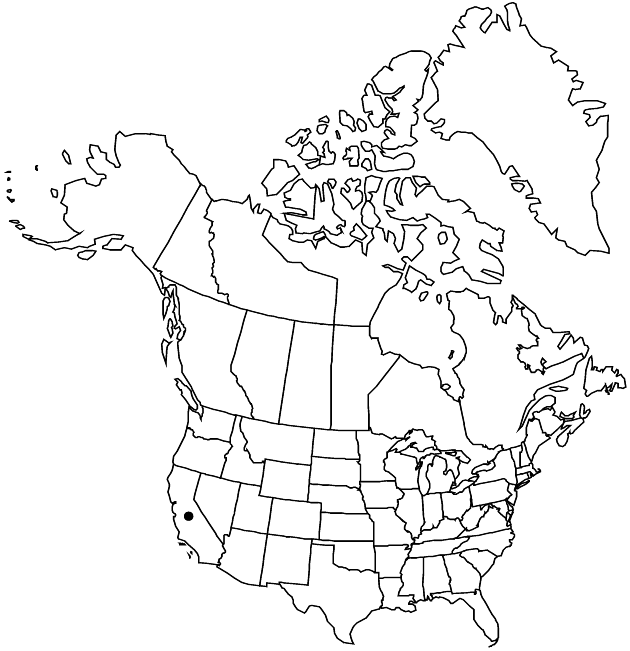Hulsea vestita subsp. pygmaea
Aliso 7: 413. 1972.
Common names: Pygmy alpinegold
IllustratedEndemicConservation concern
Basionym: Hulsea vestita var. pygmaea A. Gray in A. Gray et al., Syn. Fl. N. Amer. 1(2): 343. 1884
Treatment appears in FNA Volume 21. Treatment on page 400.
Revision as of 21:31, 29 July 2020 by imported>Volume Importer
Plants 5–15 cm. Leaves: proximal blades spatulate, 1–4 cm, margins dentate to lobed, faces: abaxial densely lanate to woolly, adaxial glandular-puberulent. Heads 1. Involucres obconic to hemispheric, 15–18 mm diam. Phyllaries narrowly oblanceolate to obovate, 8–10 mm, (margins scarious) apices acuminate. Ray-florets 9–20; laminae orange to reddish orange, 7–10 mm. Disc corollas orange. Cypselae 7–9 mm; pappus-scales equal, 1.5–2 mm. 2n = 38.
Phenology: Flowering late spring–summer.
Habitat: Alpine to subalpine rocky slopes and talus, granitic or volcanic substrates
Elevation: 3000–3900 m
Discussion
Of conservation concern.
Subspecies pygmaea grows in the San Bernardino Mountains and the southern Sierra Nevada.
Selected References
None.
Lower Taxa
None.
... more about "Hulsea vestita subsp. pygmaea"
glandular-puberulent +
introrse +
connate +
herbaceous +
acuminate +
scarious +
absent +
hirsute +
papillate +
corymbiform +
continuous +
decurrent +
spatulate +
winged;ribbed;winged;ribbed +
1;15 +
stigmatic +
6;80 +
absent +
Pygmy alpinegold +
glabrous +
zygomorphic +
monomorphic +
dimorphic +
silky-hairy +
7mm;9mm +
staminate +
reduced +
Calif. +
straight +
scabrellous +
distinct +
proximal +
1;5 +
bisexual +
dispersed +
singly +
discoid +
indeterminate +
Present +
surrounding +
obconic;hemispheric +
basal +
2-carpellate +
inferior +
attached +
anatropous +
subequal +
persistent +
fragile +
falling +
equal +
tough +
thick +
absent +
connate +
persistent +
distinct +
falling +
unequal +
spatulate +
Aliso +
1972 +
pistillate +
absent +
fertile +
epaleate +
pitted +
knobby +
fibrous +
distinct +
laciniate +
exalbuminous +
modifed +
2;4 +
alternate +
erect +
2-branched +
papillate +
Hulsea vestita subsp. pygmaea +
Hulsea vestita +
subspecies +
cylindric +
equaling +
shorter +
longer +
perennial +

